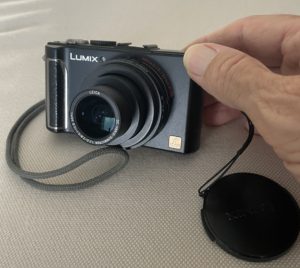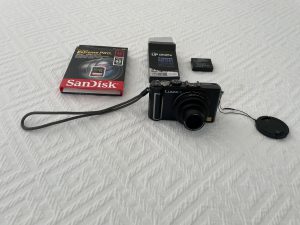
Als fotografie-enthousiast heb ik me sinds medio 2021 in de basics van de zogeheten stock-foto’s verdiept. Vooral uit nieuwsgierigheid. Simpel gezegd: je maakt foto’s, stuurt die in op internet-sites voor de verkoop en je wacht op je geld dat binnenstroomt.
Althans, dat beloven allerlei mensen die op internet hun verhaal doen over stock fotografie voor Getty Images, Shutterstock, Adobe Stock, Alamy en nog veel meer van dat soort bedrijven. Mijn foto-archief, dat ik heb verzameld in Adobe Lightroom, is heel groot en bijvoorbeeld van al onze binnen- en buitenlandse reizen heb ik in de loop van de jaren vele duizenden mooie foto’s dus ik dacht daar zit allicht nogal wat verkoopbaar materiaal bij. Veel foto’s heb ik de laatste jaren gemaakt met mijn iPhone’s – steeds weer met een nieuwer type tot en met de laatste iPhone 12 Pro – en op het telefoonschermpje zien de beelden er dan gelikt uit.
Maar zoals altijd: de praktijk blijkt weerbarstiger. Over mijn inzendingen doet Getty Images doorgaans niet zo moeilijk, maar Shutterstock en Adobe Stock zijn veel kritischer. Vaak mankeert er aan de iPhone-foto’s van alles en nog wat. Zoals bewegingsonscherpte, ruis, ‘film grain’ enz.
Op de Adobe Community blijkt wel dat de iPhone minder geschikt is voor stock fotografie. Op het schermpje zien de foto’s er mooi uit, maar op een groot computerscherm blijkt er van alles en nog wat aan de hand te zijn. Een van de beperking is dat de beeldsensor in de iPhone beperkt is qua afmetingen. In een ‘gewone’ digitale camera is die sensor al gauw vele malen groter. Nu wil het geval dat ik sinds 2009 een DSLR-camera heb – een Panasonic Lumix DMC-LX3 met Leica-lens – maar vanwege de gemakkelijke hanteerbaarheid van de iPhone kwam die Lumix thuis meer in een hoekje te liggen.
Voor de stock fotografie ben ik nu het experiment aangegaan, en begonnen met het inzenden van foto’s genomen met de Panasonic Lumix DMC-LX3. Daartoe twee nieuwe, oplaadbare Lithium Ion-batterijen gekocht want de oude waren nagenoeg ‘op’ en een groter Sandisk SD HC-kaartje van 32GB voor voldoende foto-opslag, dit ook m.h.o.o. het maken van RAW-foto’s. Kijken nu hoe de beoordelingen uitpakken…

Specs van de Lumix (gekopieerd van een website)
The high-aperture professional lens
The Leica DC Vario-Summicron lens 1:2.0-2.8/5.1-12.8 ASPH is a high-aperture lens for digital compact cameras that allows the real enthusiast to work with an open shutter. Its high speed makes the camera ideal for available light exposures. Whether in poor light or for selective use of field depth, the lens gives the photographer scope for highly individual picture composition. The aspherical zoom lens with a focusing range of 24-60 mm opens up new creative options in reportage photography.
The lens design consists of eight elements, of which four are aspherical. These are matched individually to the camera sensor, working in harmony with the electronics and software, to produce stunningly brilliant pictures in true-to-life colors.
Powerful sensor
At a standard resolution of 10.1 megapixels, the overlarge size of the 1/1.63″ CCD image sensor increases image quality distinctly. The smallest details of the subject are reproduced exactly. The camera can take photos in all three formats (4:3/3:2/16:9) to suit the particular recording or playback situation. On the 3″ LCD monitor with a resolution of 460,000 pixels, pictures can be viewed and assessed in excellent quality before and after they are taken. Leica Camera AG has developed its own unique colour matching, contrast and picture definition profile which produces digital characteristics complimentary to Leica M film photography.
More creative possibilities
The ergonomic layout of controls and intuitive operating system make it a pleasure to handle. Focus, shutter speed, stops and exposure override can all be set manually with the joystick giving the real enthusiast scope for highly individual picture composition. Of course you can also use the intelligent automatic mode: Depending on the subject and photographic situation, the camera automatically selects the best mode from Scene Select, either macro, landscape, portrait, night portrait, or night scene. The professional software Capture One 4 (RAW data converter) makes sure that the RAW data supplied by the CCD sensor is “processed” in optimum quality. Data recording can be in Fine, Standard, RAW or combinations.